Reuters Worldwide Fundamentals Data Guide
The Reuters Worldwide Fundamentals data available through Interactive Brokers consists of 2 datasets:
- Financial statements: provides cash flow, balance sheet, and income metrics. Time-indexed to the relevant fiscal period as well as the filing date for point-in-time backtesting.
- Estimates and actuals: provides analyst estimates and actuals for a variety of indicators. Actuals include the announcement date, for point-in-time backtesting.
Estimates vs Financials at-a-glance
The estimates/actuals dataset and the financial statements dataset both contain financial metrics that can be used in backtesting and trading. The following table will help you decide which dataset to use. Generally, the financial statements dataset offers more indicators and broader coverage, while the estimates/actuals dataset offers a longer history of quarterly reports.
| Estimates and actuals | Financial statements | |
|---|---|---|
| Number of securities covered | good | better |
| Number of indicators | approx. 20 | approx. 125 |
| Period types | Annual, Semi-annual, or Quarterly | Annual or Interim |
| Annual reports available | 5 years | 6 years |
| Quarterly reports available | 8 quarters | 6 quarters |
| Includes filing date (point in time) | yes | yes |
| Includes restatements | no | yes |
| Includes analyst estimates | yes | no |
Depth of coverage
The Reuters Worldwide Fundamentals dataset does not provide data back to a fixed start date but rather provides a rolling window of historical data from the time the data is collected. The typical amount of data available is shown below:
| Report type | Period type | Data depth |
|---|---|---|
| Estimates and actuals | Annual | 5 years |
| Estimates and actuals | Quarterly | 8 quarters |
| Financial statements | Annual | 6 years |
| Financial statements | Interim | 6 quarters |
Available indicators
The Reuters estimates dataset provides analyst estimates and actuals for a variety of metrics. The Reuters financial statements dataset provides over 125 income, balance sheet, and cash flow metrics.
Estimates and Actuals
BVPS: Book Value Per Share
CAPEX: Capital Expenditure
CFSHR: Cash Flow Per Share
CPS: Cash Flow Per Share
CSH: Cash Earnings Per Share
DDPS1: Dividend Per Share - Common Stock Primary Issue
DPS: Dividend Per Share
EBIT: Earnings Before Interest and Tax
EBITD: Earnings Before Interest, Taxes, and Depreciation
EBITDA: Earnings Before Interest, Taxes, Depreciation and Amortization
EBS: EBITDA Per Share
EIBT: Net Income Before Taxes
EPS: Earnings Per Share Excluding Exceptional Items
EPSEBG: Earnings Per Share Before Goodwill
EPSREP: Earnings Per Share Reported
EV: Enterprise Value
FFO: Funds From Operations Per Share
GPS: GAAP Earnings Per Share
GROSMGN: Gross Margin
NAV: Net Asset Value Per Share
NDEBT: Net Debt
NETDEBT: Net Debt
NPROFIT: Net Profit Excluding Exceptional Items
NPROFITEBG: Net Profit Before Goodwill
NPROFITREP: Net Profit Reported
OPROFIT: Operating Profit
PPROFIT: Pre-Tax Profit Excluding Exceptional Items
PPROFITEBG: Pre-Tax Profit Before Goodwill
PPROFITREP: Pre-Tax Profit Reported
REVENUE: Revenue
ROA: Return On Assets
ROE: Return On Equity
ROEPCT: Return On Equity
SCEX: Capital Expenditures
SDBF: Diluted EPS Excluding Extraordinary Items
SREV: RevenueFinancial statements - Balance sheet
AACR: Accounts Receivable - Trade, Net
ACAE: Cash & Equivalents
ACDB: Cash & Due from Banks
ACSH: Cash
ADEP: Accumulated Depreciation, Total
ADPA: Deferred Policy Acquisition Costs
AGWI: Goodwill, Net
AINT: Intangibles, Net
AITL: Total Inventory
ALTR: Note Receivable - Long Term
ANTL: Net Loans
APPN: Property/Plant/Equipment, Total - Net
APPY: Prepaid Expenses
APRE: Insurance Receivables
APTC: Property/Plant/Equipment, Total - Gross
ASTI: Short Term Investments
ATCA: Total Current Assets
ATOT: Total Assets
ATRC: Total Receivables, Net
LAEX: Accrued Expenses
LAPB: Accounts Payable
LCLD: Current Port. of LT Debt/Capital Leases
LCLO: Capital Lease Obligations
LDBT: Total Deposits
LLTD: Long Term Debt
LMIN: Minority Interest
LPBA: Payable/Accrued
LSTB: Total Short Term Borrowings
LSTD: Notes Payable/Short Term Debt
LTCL: Total Current Liabilities
LTLL: Total Liabilities
LTTD: Total Long Term Debt
QEDG: ESOP Debt Guarantee
QPIC: Additional Paid-In Capital
QRED: Retained Earnings (Accumulated Deficit)
QTCO: Total Common Shares Outstanding
QTEL: Total Liabilities & Shareholders' Equity
QTLE: Total Equity
QTPO: Total Preferred Shares Outstanding
QTSC: Treasury Stock - Common
QUGL: Unrealized Gain (Loss)
SBDT: Deferred Income Tax
SCMS: Common Stock, Total
SCSI: Cash and Short Term Investments
SINV: Long Term Investments
SLTL: Other Liabilities, Total
SOAT: Other Assets, Total
SOBL: Other Bearing Liabilities, Total
SOCA: Other Current Assets, Total
SOCL: Other Current liabilities, Total
SOEA: Other Earning Assets, Total
SOLA: Other Long Term Assets, Total
SOTE: Other Equity, Total
SPOL: Policy Liabilities
SPRS: Preferred Stock - Non Redeemable, Net
SRPR: Redeemable Preferred Stock, Total
STBP: Tangible Book Value per Share, Common Eq
STLD: Total Debt
SUPN: Total Utility Plant, NetFinancial statements - Income statement
CEIA: Equity In Affiliates
CGAP: U.S. GAAP Adjustment
CIAC: Income Available to Com Excl ExtraOrd
CMIN: Minority Interest
DDPS1: DPS - Common Stock Primary Issue
EDOE: Operations & Maintenance
EFEX: Fuel Expense
EIBT: Net Income Before Taxes
ELLP: Loan Loss Provision
ENII: Net Interest Income
EPAC: Amortization of Policy Acquisition Costs
ERAD: Research & Development
ETOE: Total Operating Expense
NAFC: Allowance for Funds Used During Const.
NGLA: Gain (Loss) on Sale of Assets
NIBX: Net Income Before Extra. Items
NINC: Net Income
RNII: Net Investment Income
RRGL: Realized & Unrealized Gains (Losses)
RTLR: Total Revenue
SANI: Total Adjustments to Net Income
SCOR: Cost of Revenue, Total
SDAJ: Dilution Adjustment
SDBF: Diluted EPS Excluding ExtraOrd Items
SDNI: Diluted Net Income
SDPR: Depreciation/Amortization
SDWS: Diluted Weighted Average Shares
SGRP: Gross Profit
SIAP: Net Interest Inc. After Loan Loss Prov.
SIIB: Interest Income, Bank
SINN: Interest Exp.(Inc.),Net-Operating, Total
SLBA: Losses, Benefits, and Adjustments, Total
SNIE: Non-Interest Expense, Bank
SNII: Non-Interest Income, Bank
SNIN: Interest Inc.(Exp.),Net-Non-Op., Total
SONT: Other, Net
SOOE: Other Operating Expenses, Total
SOPI: Operating Income
SORE: Other Revenue, Total
SPRE: Total Premiums Earned
SREV: Revenue
SSGA: Selling/General/Admin. Expenses, Total
STIE: Total Interest Expense
STXI: Total Extraordinary Items
SUIE: Unusual Expense (Income)
TIAT: Net Income After Taxes
TTAX: Provision for Income Taxes
VDES: Diluted Normalized EPS
XNIC: Income Available to Com Incl ExtraOrdFinancial statements - Cash Flow statement
FCDP: Total Cash Dividends Paid
FPRD: Issuance (Retirement) of Debt, Net
FPSS: Issuance (Retirement) of Stock, Net
FTLF: Cash from Financing Activities
ITLI: Cash from Investing Activities
OBDT: Deferred Taxes
OCPD: Cash Payments
OCRC: Cash Receipts
ONET: Net Income/Starting Line
OTLO: Cash from Operating Activities
SAMT: Amortization
SCEX: Capital Expenditures
SCIP: Cash Interest Paid
SCTP: Cash Taxes Paid
SDED: Depreciation/Depletion
SFCF: Financing Cash Flow Items
SFEE: Foreign Exchange Effects
SICF: Other Investing Cash Flow Items, Total
SNCC: Net Change in Cash
SNCI: Non-Cash Items
SOCF: Changes in Working CapitalValuation metrics
Valuation metrics such as EPS or P/E ratio compare a company's fundamentals to its share price or market value. These metrics are useful for comparing companies, unlike metrics such as net income which scale with the size of the company and thus aren't typically used for company-to-company comparisons.
The estimates and actuals dataset contains a variety of valuation metrics including Book Value Per Share, Earnings Per Share (several variants), Net Asset Value Per Share, Cash Flow Per Share, Return on Equity, Return on Assets, and a few others.
The Reuters financial statements dataset is more "raw" and does not include any precalculated valuation metrics. You can, however, calculate valuation metrics yourself in conjunction with historical price data. Due to the larger number of available fields in the financial statements dataset, it is possible to derive valuation metrics that are not provided by the estimates and actuals dataset, such as enterprise multiple.
Point-in-time date fields
Estimates and actuals date fields
The estimates and actuals dataset provides two date fields:
FiscalPeriodEndDate: the end date of the fiscal period the estimates and actuals are forUpdatedDate: the date (and time) the information was recorded in Reuters' system.
The UpdatedDate field can be used for point-in-time analysis.
UpdatedDate applies to actuals only. Estimate dates are not provided; estimates are the latest estimates prior to the announcement of the actuals.
Financial statements date fields
The financial statements dataset provides two date fields:
FiscalPeriodEndDate: the end date of the fiscal period the report is forSourceDate: the date the report was released (for U.S. companies, this is usually the Form 10-K filing date)
The SourceDate field can be used for point-in-time analysis.
Restatements
Estimates and actuals restatements
The estimates and actuals dataset does not include restatements.
Financial statement restatements
The financial statements dataset includes restatements.
Restatements, like the original statements, are time-indexed to their release date via the SourceDate field, so you know when the data became available. Restated data are distinguished from as-reported data, making it possible to exclude restated data from analysis and backtests if you choose.
When restated data is available for a particular fiscal period and financial statement (income statement, balance sheet, or cash flow statement), the corresponding as-reported financial statement is not provided by Reuters. As depicted in the table below, this can create a gap in the data as your research and backtest won't have access to the as-reported financials that would have been available in real time.
| Corporate event | Filing date | Included in Reuters data |
|---|---|---|
| 2014 annual report | February 4, 2015 | yes |
| 2015 annual report | February 3, 2016 | no (overwritten by restatement) |
| 2016 annual report and restatement of 2015 report | February 2, 2017 | yes |
This limitation only applies to financial statements that pre-date your use of QuantRocket. As you continue using QuantRocket to keep your Reuters fundamentals database up-to-date, QuantRocket will preserve the as-reported and restated financials as they appear in real-time, increasing the accuracy of your backtests.
The occurrence rate of restatements is shown below for a variety of countries:
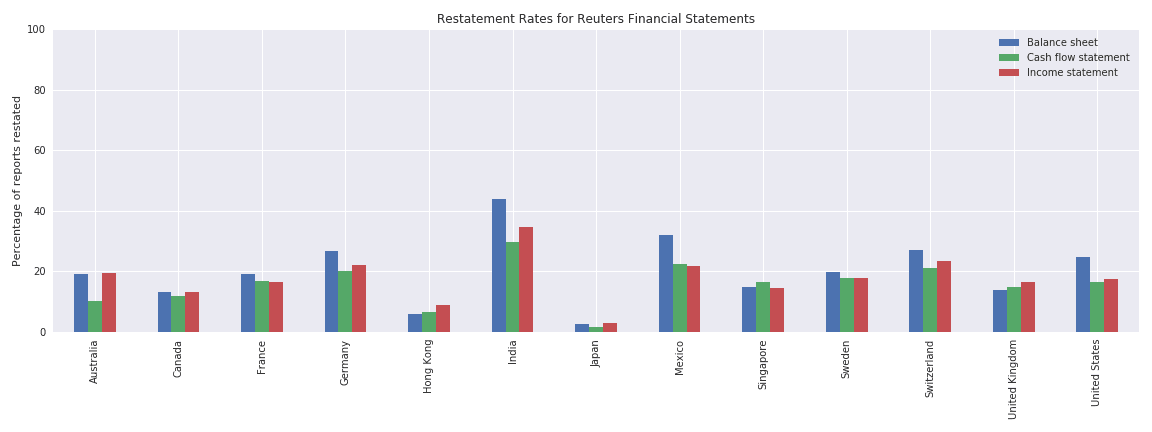
Breadth of coverage
The following charts show the availability of Reuters fundamental data for select countries and exchanges, broken down by indicator code. (Only the most common countries and exchanges are shown.)
Australia

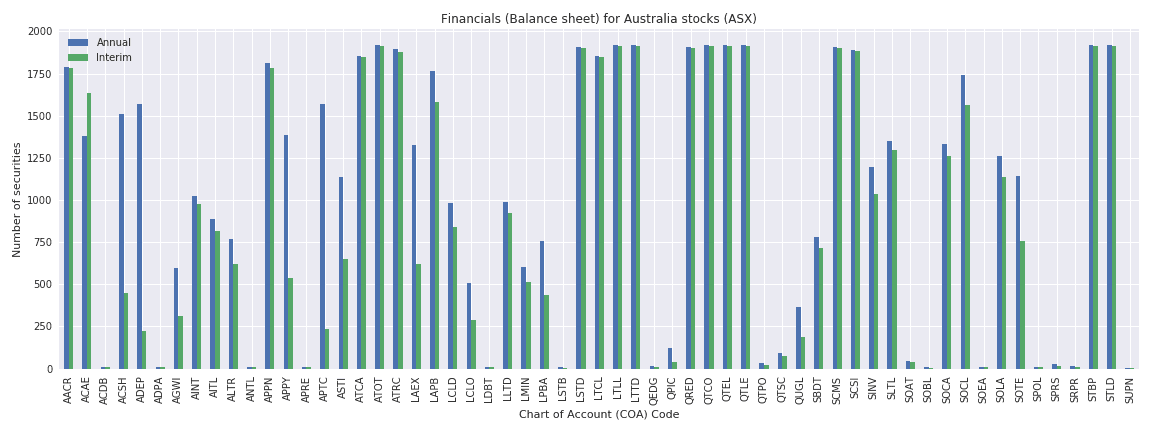

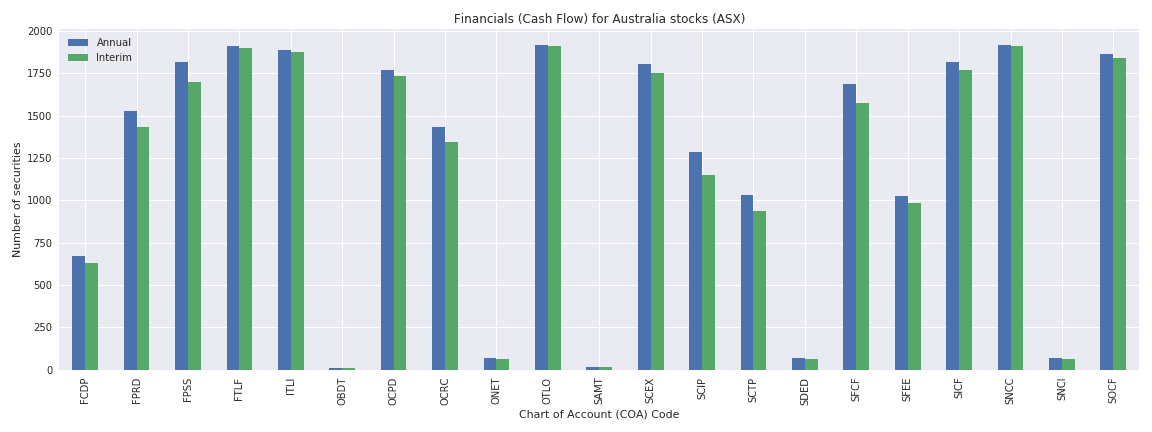
Austria
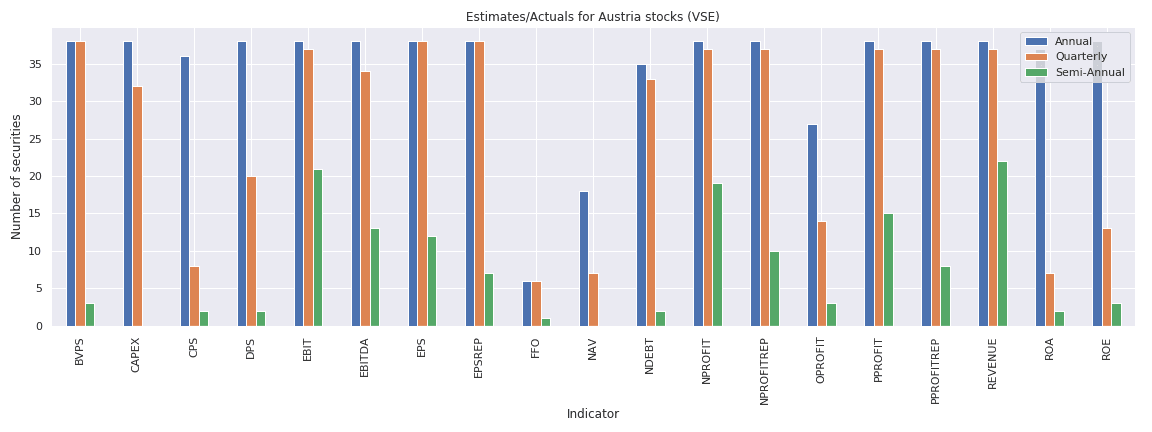
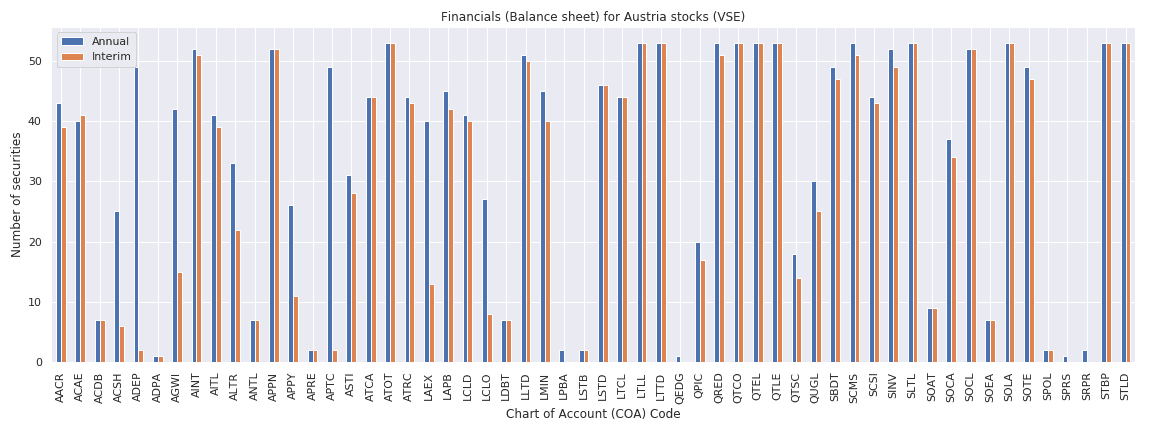
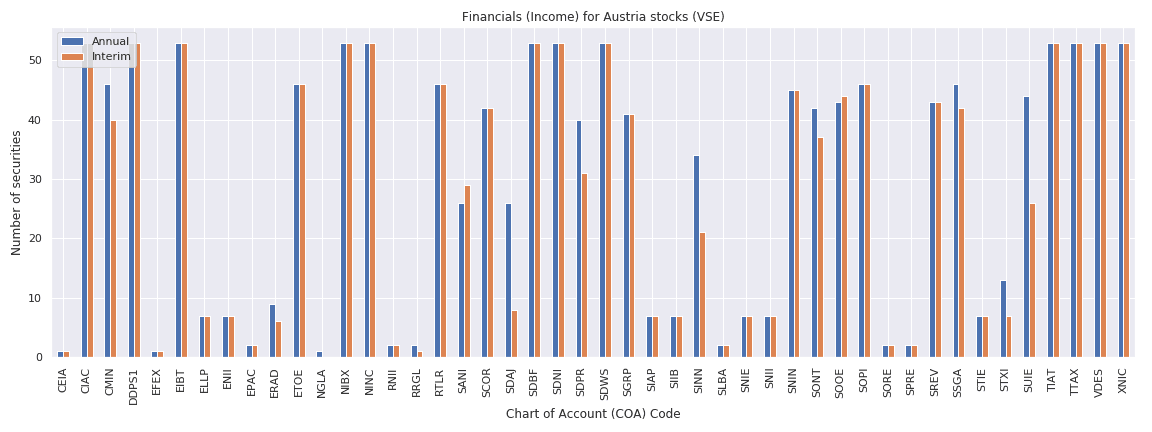
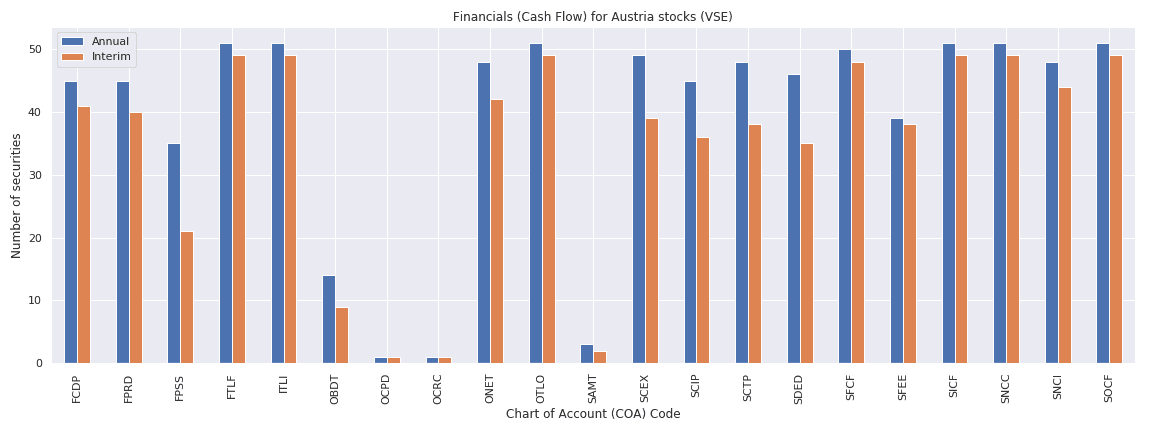
Belgium
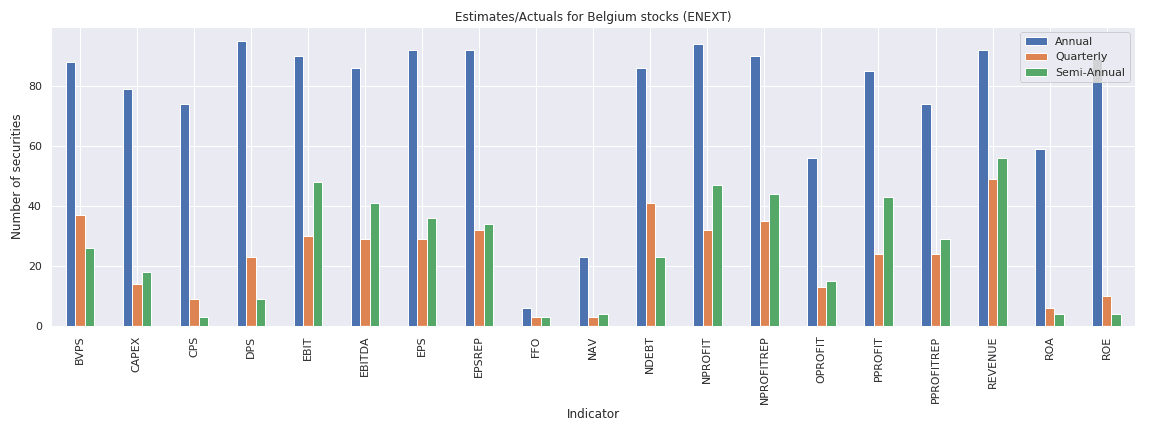

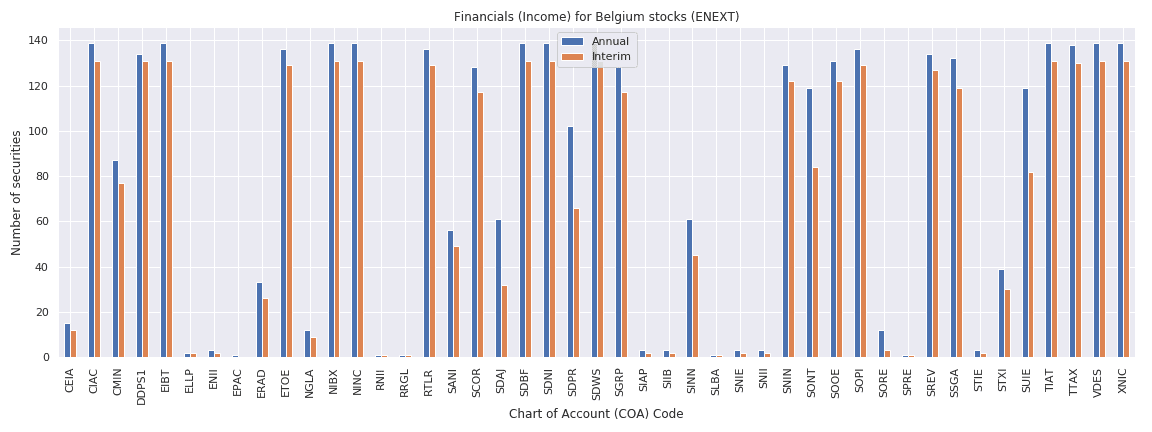
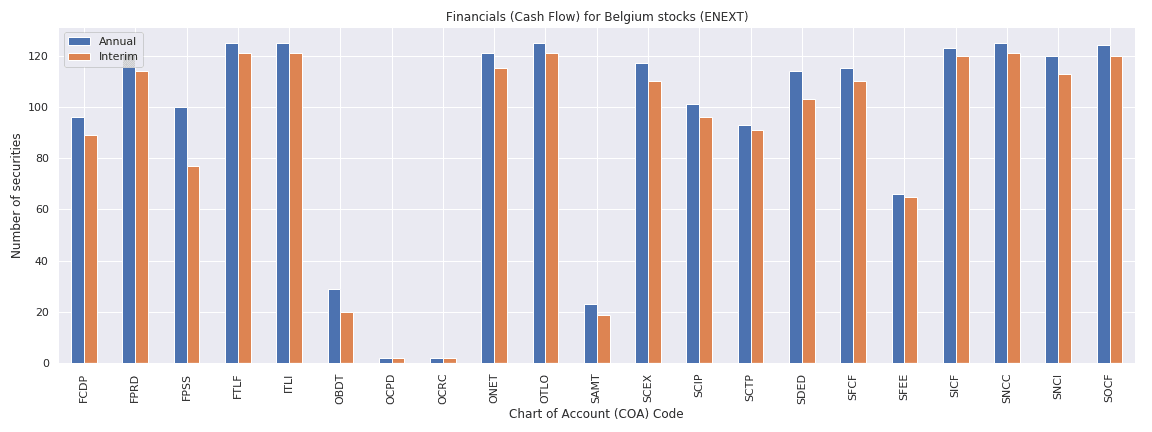
Canada
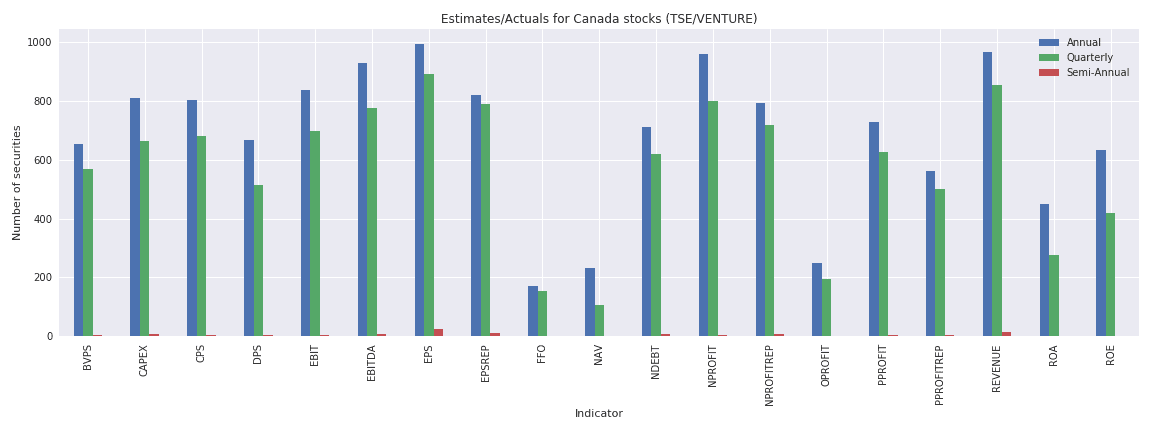
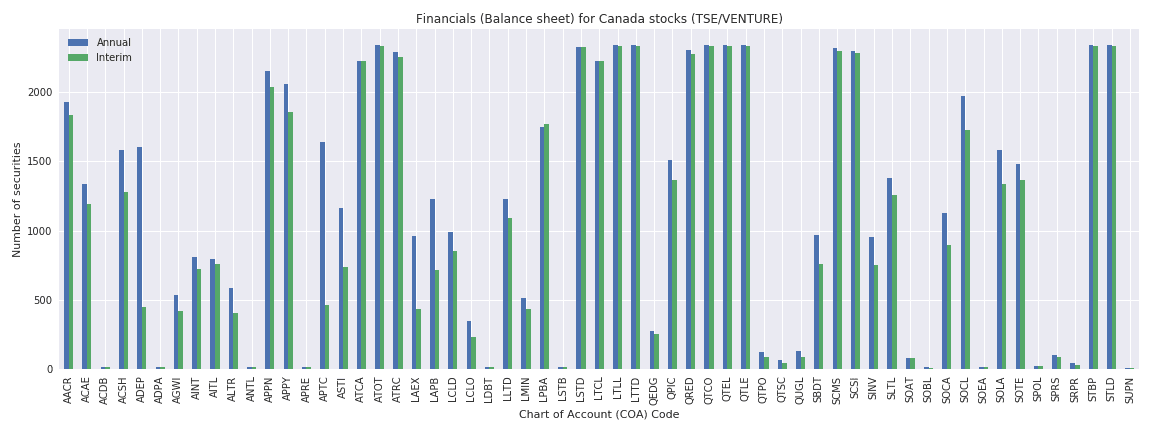
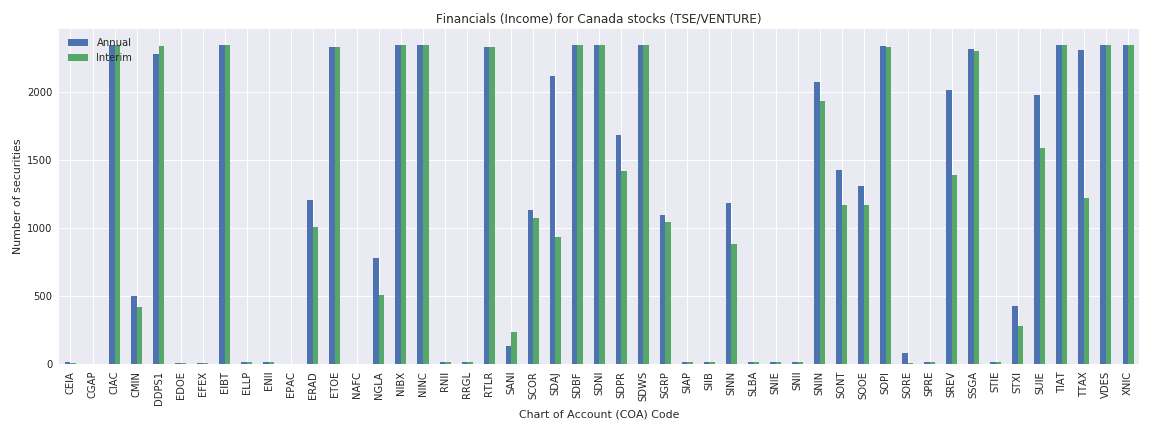
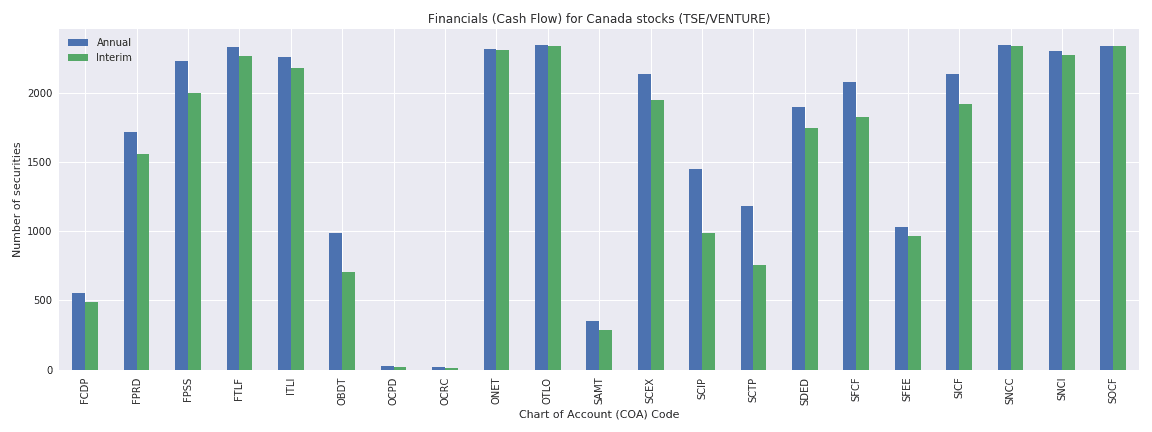
France

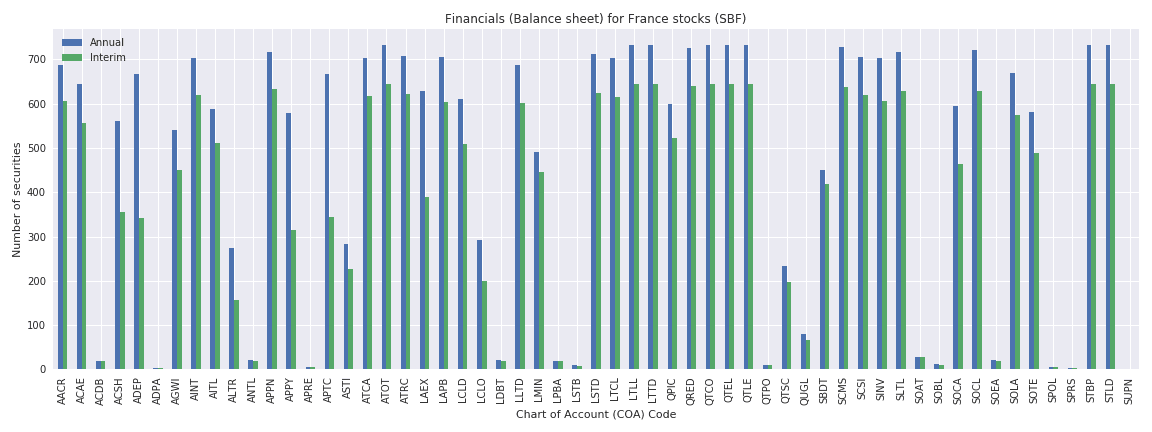


Germany
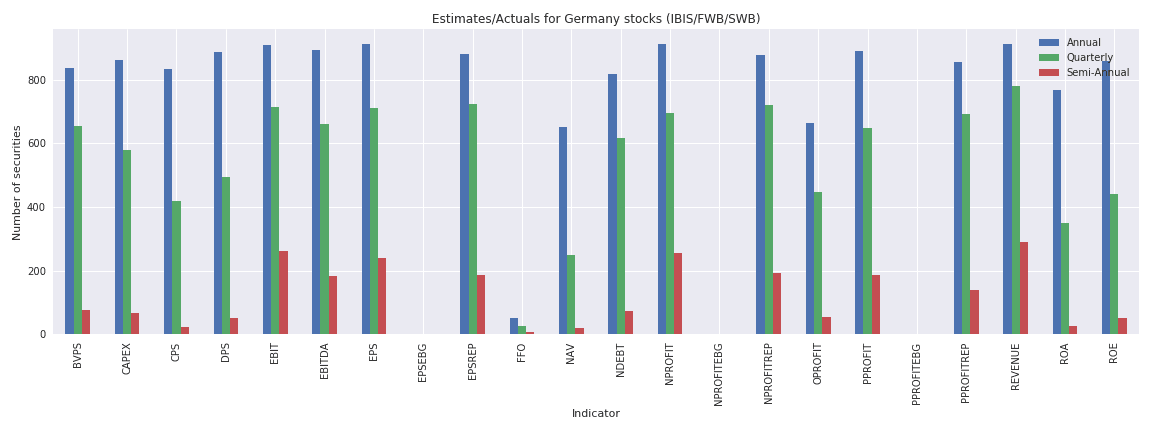
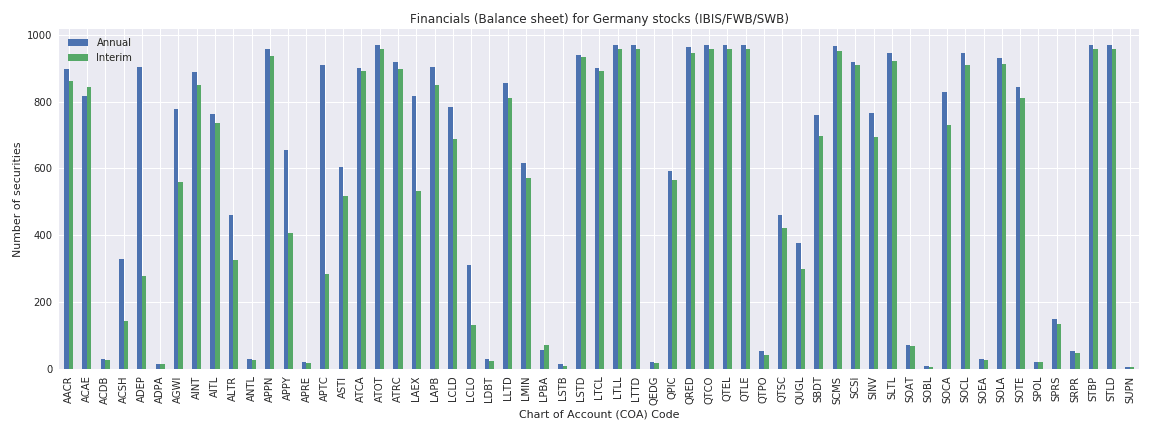
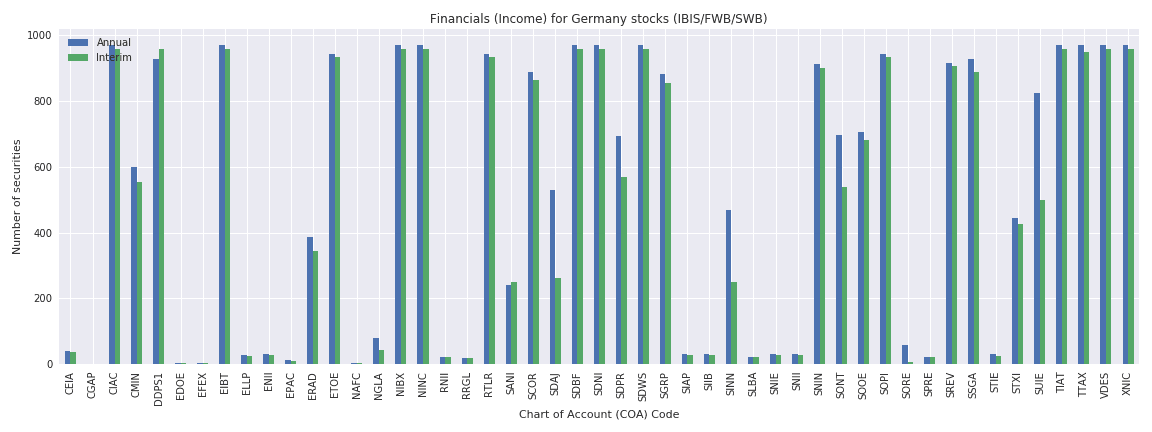
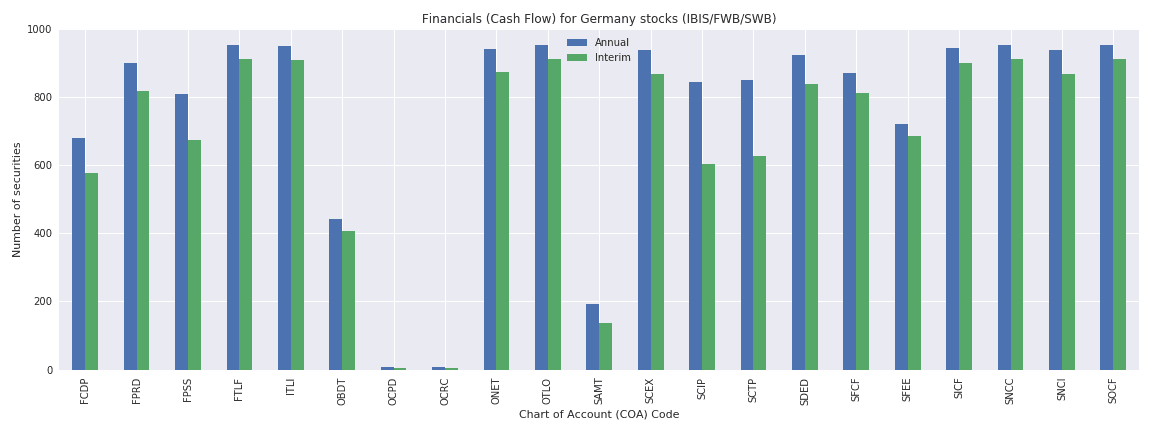
Hong Kong
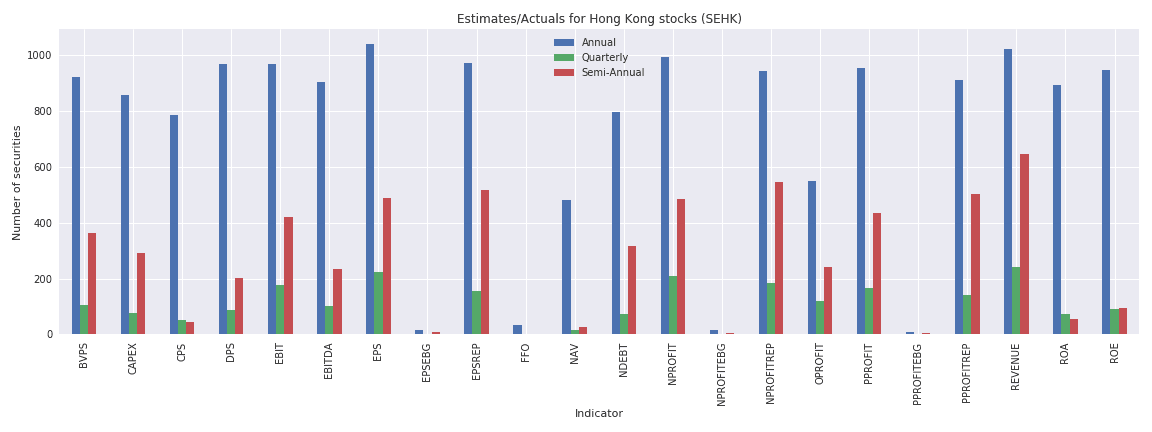
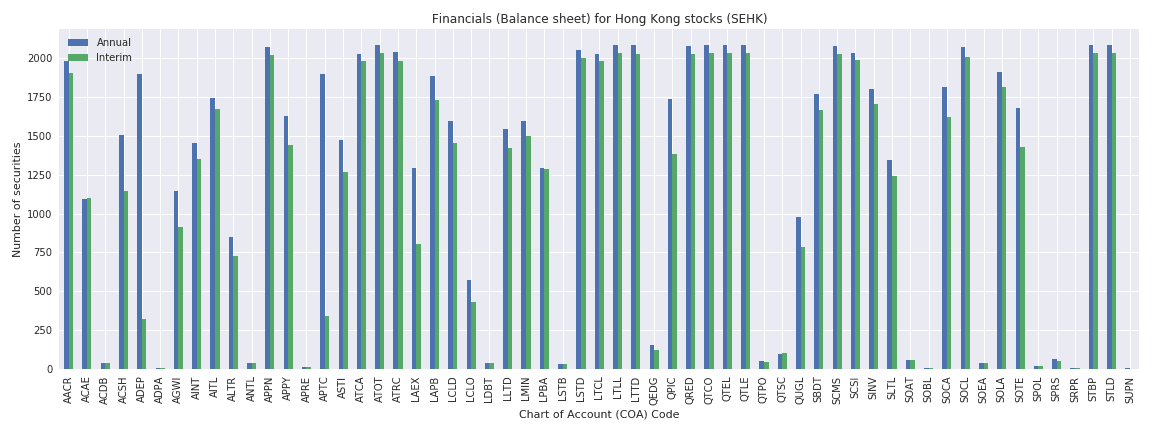

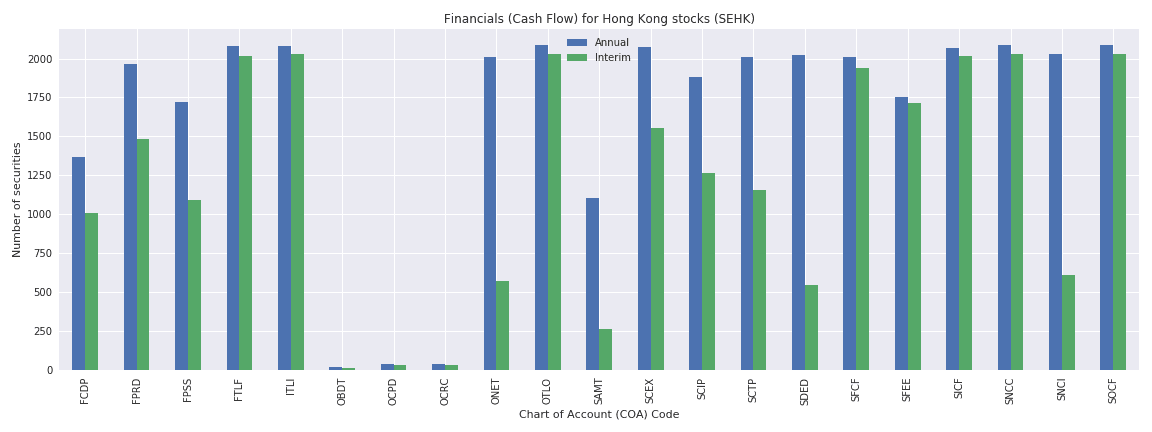
India
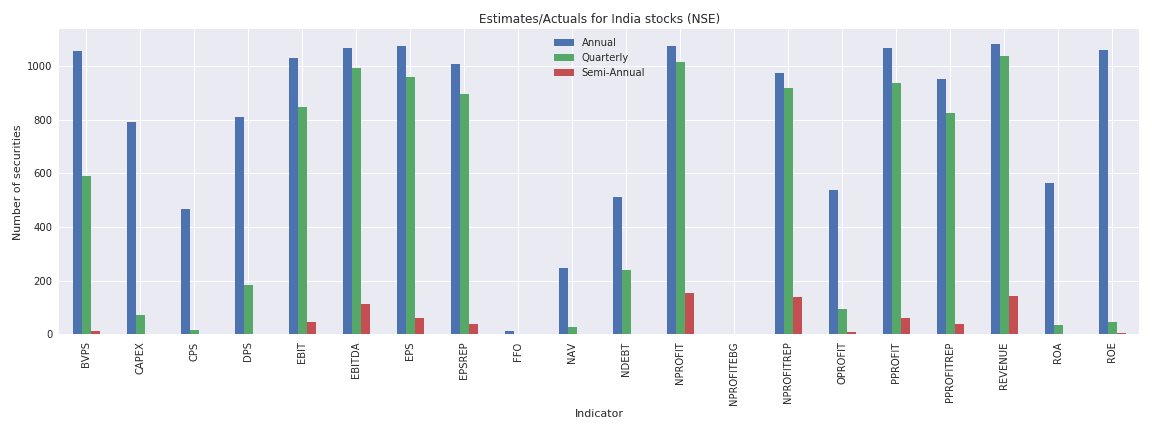
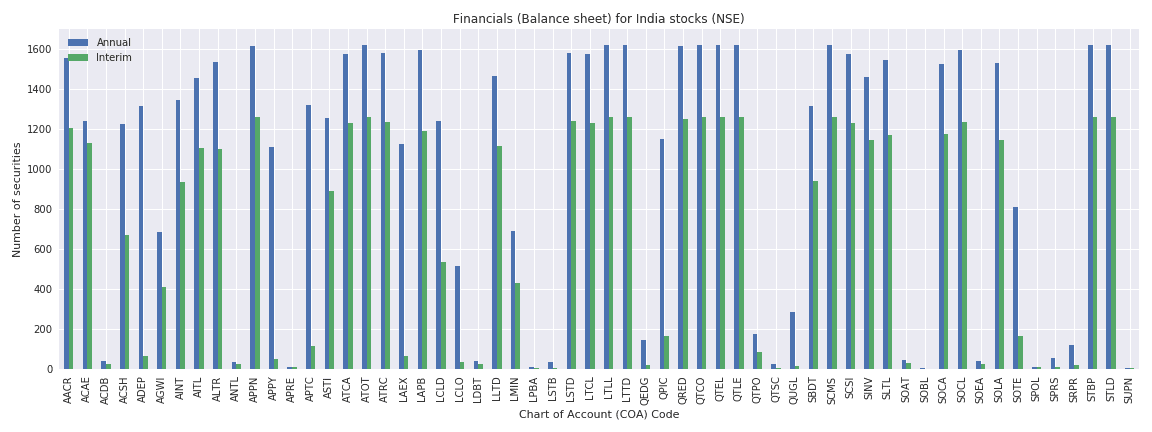
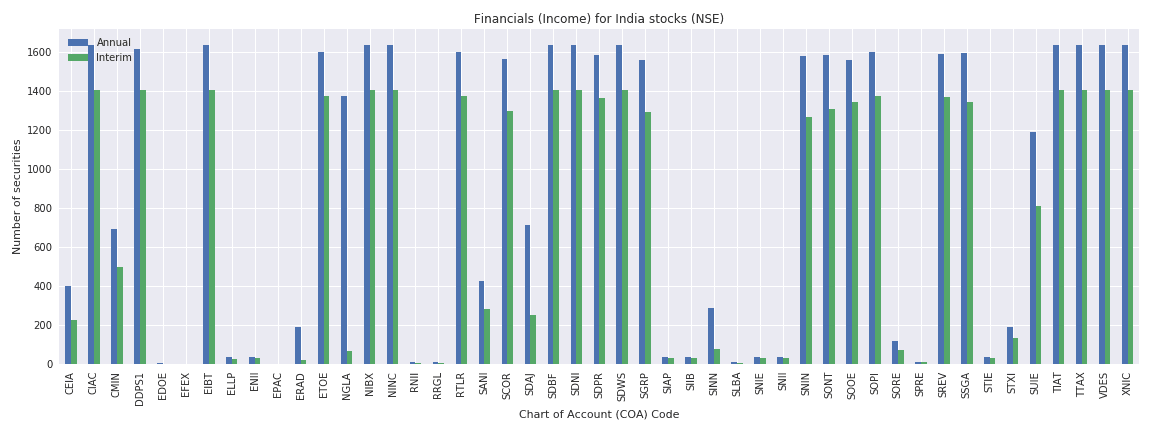

Italy
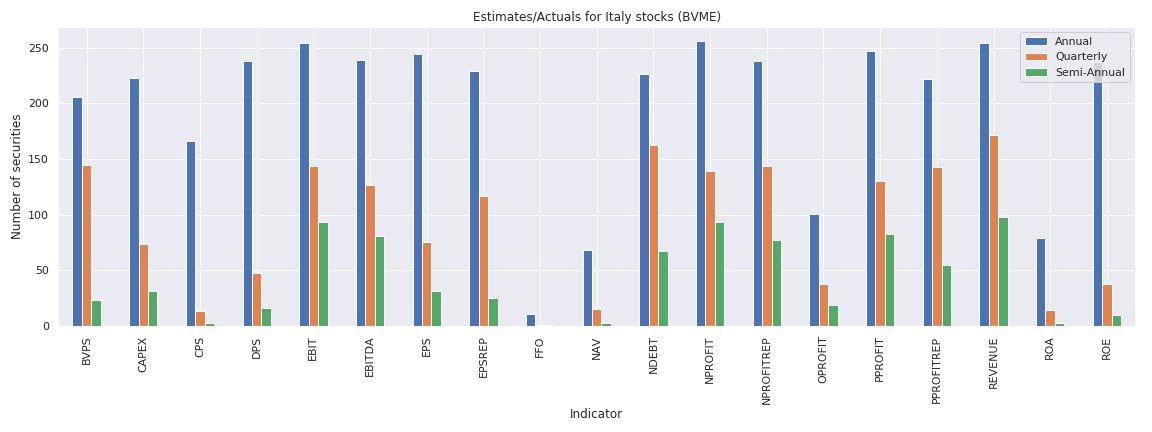
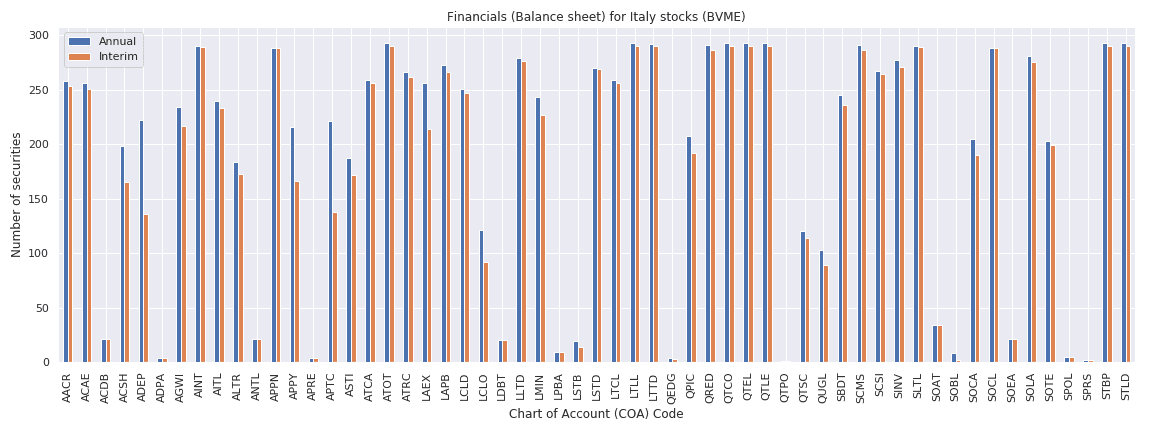
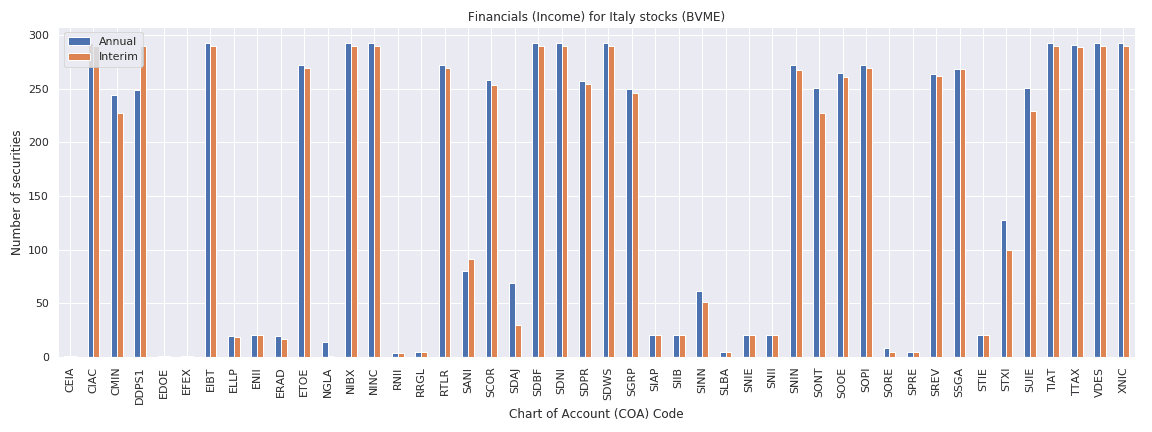
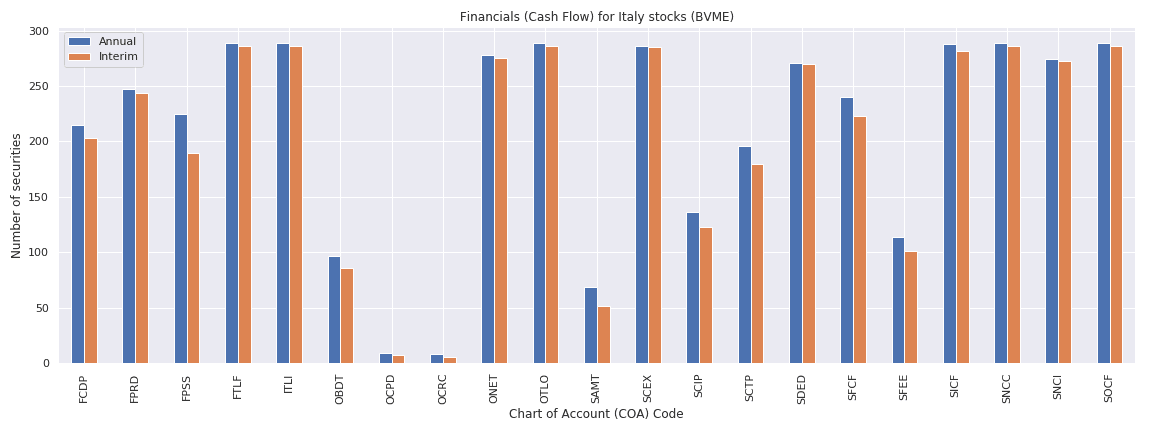
Japan
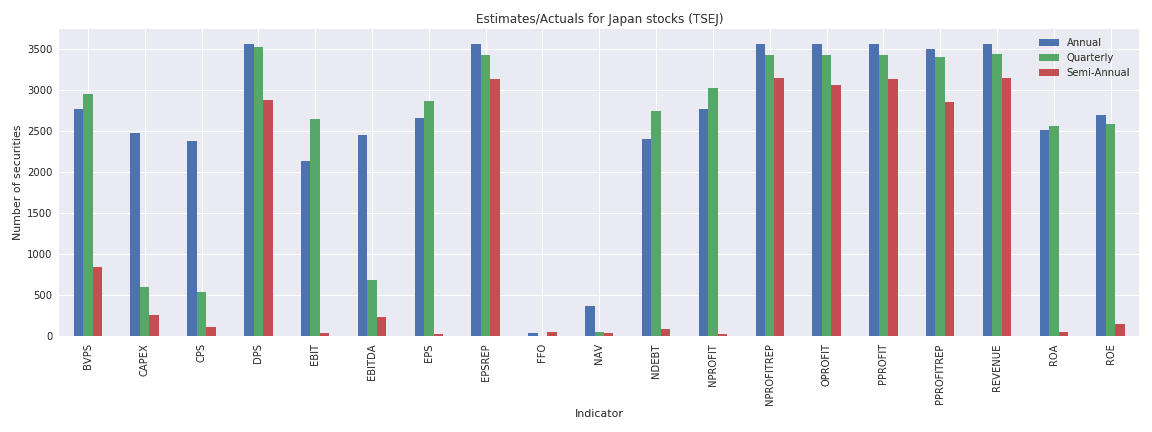
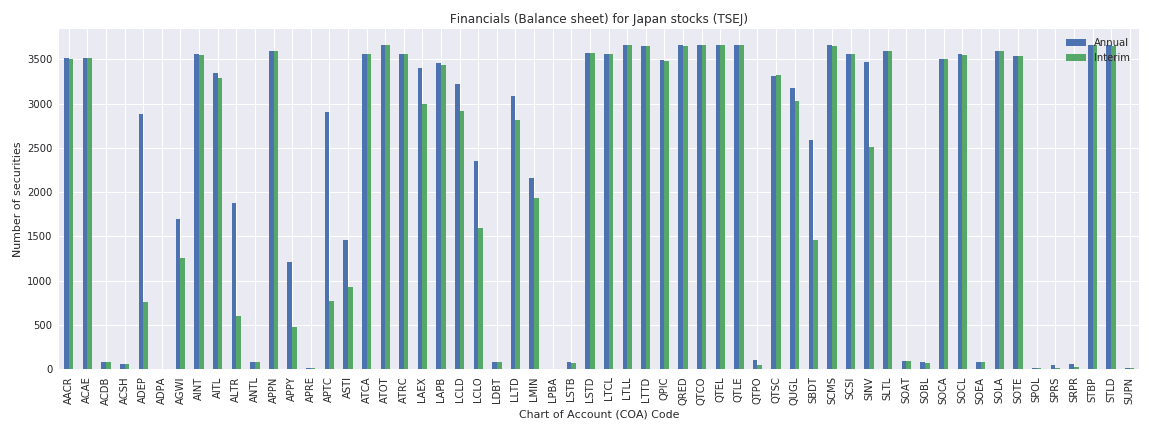
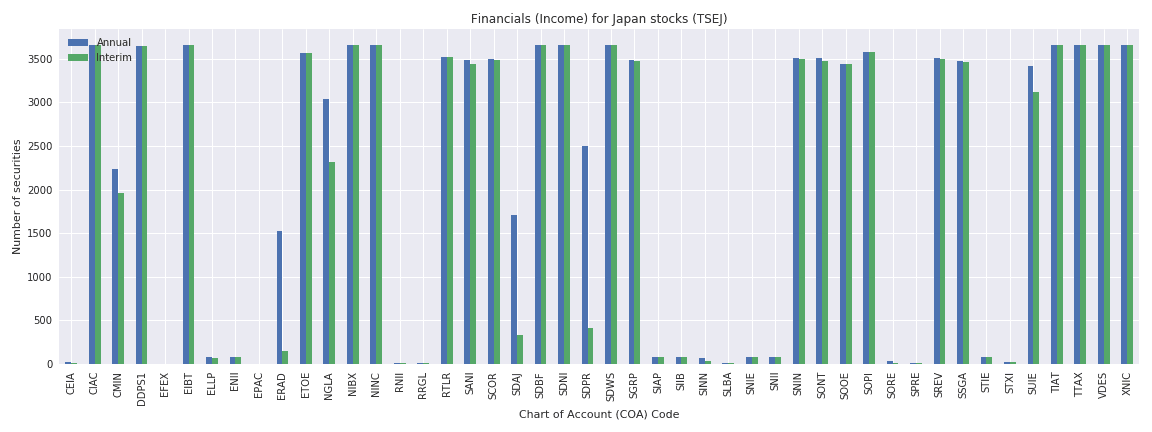
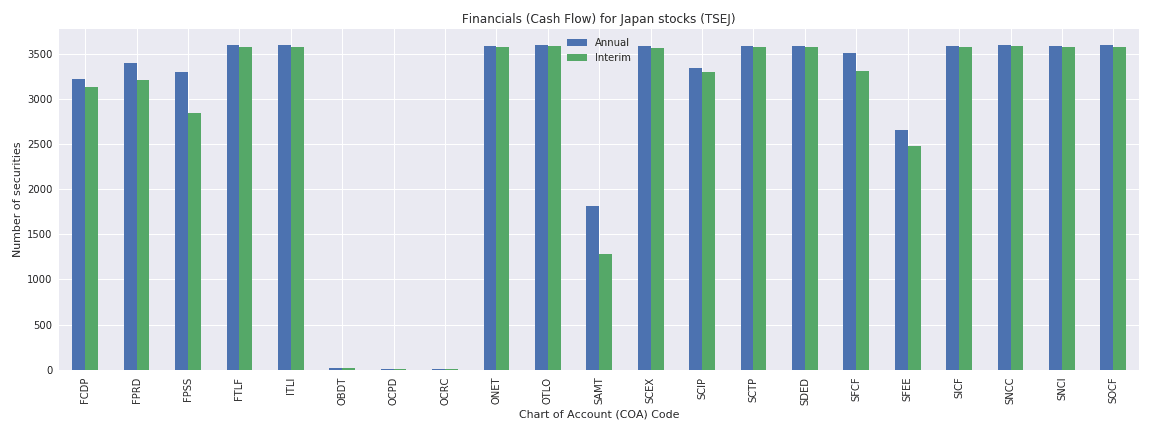
Mexico


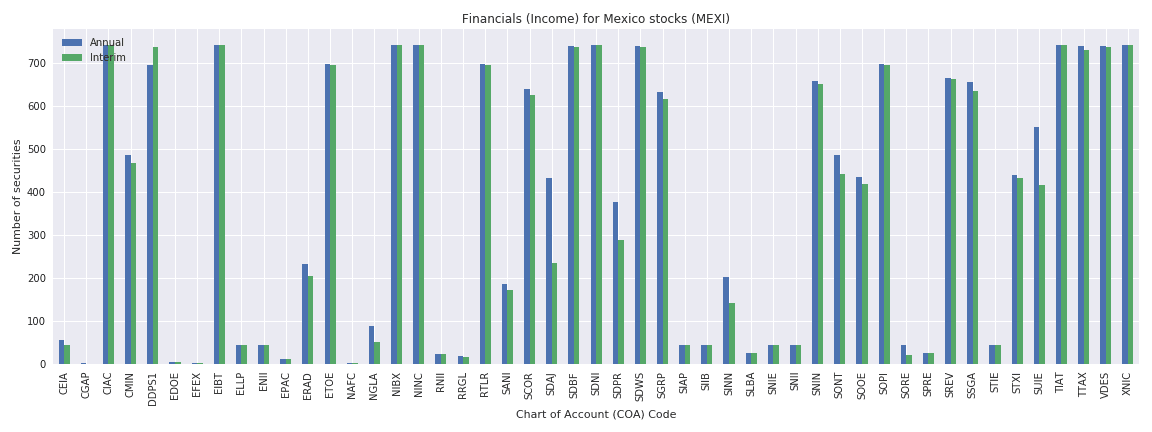
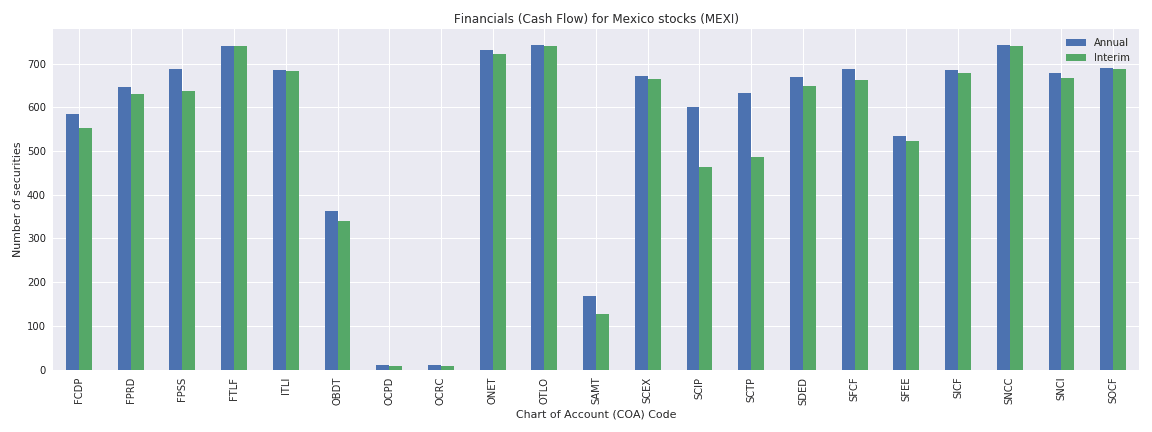
Netherlands
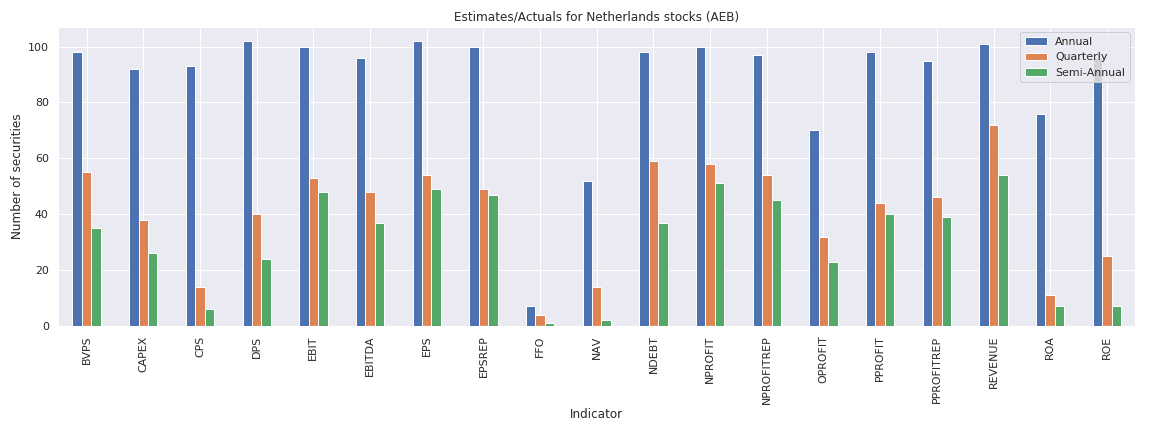

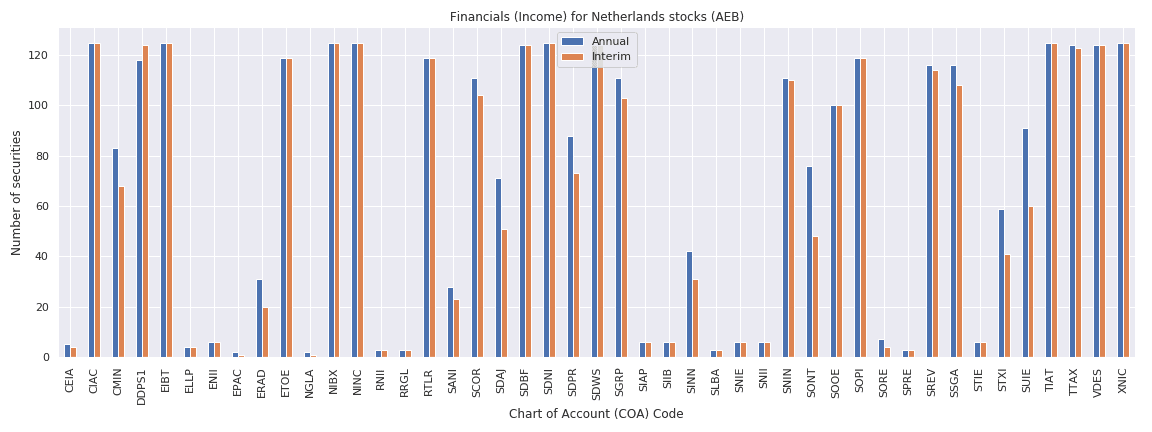
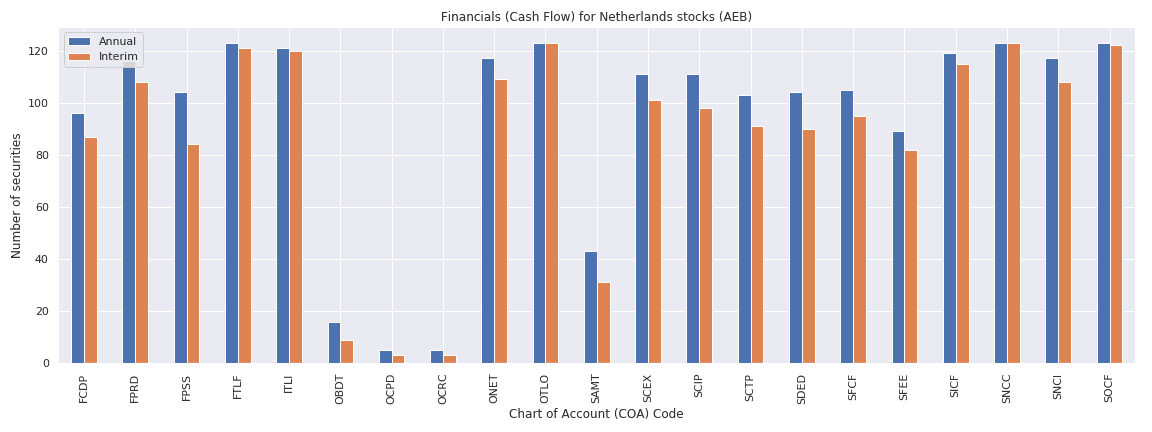
Singapore
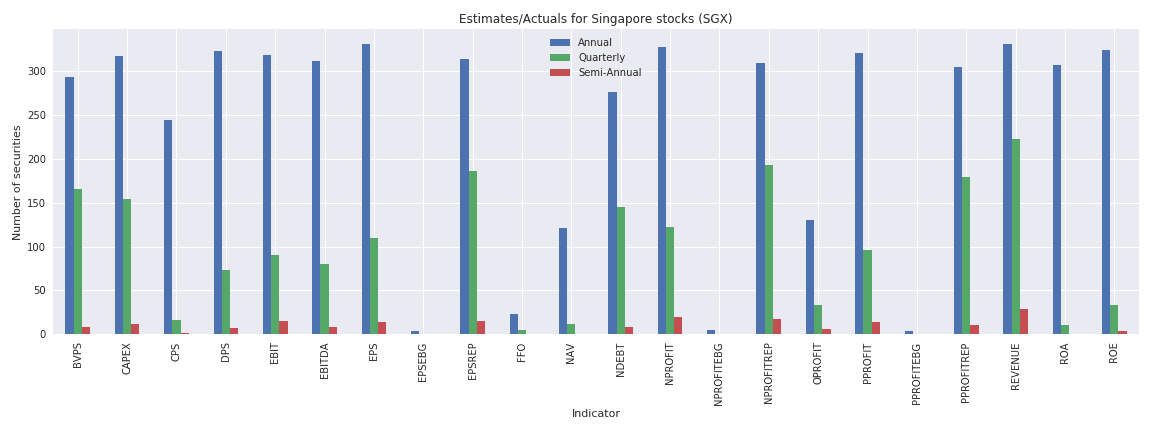

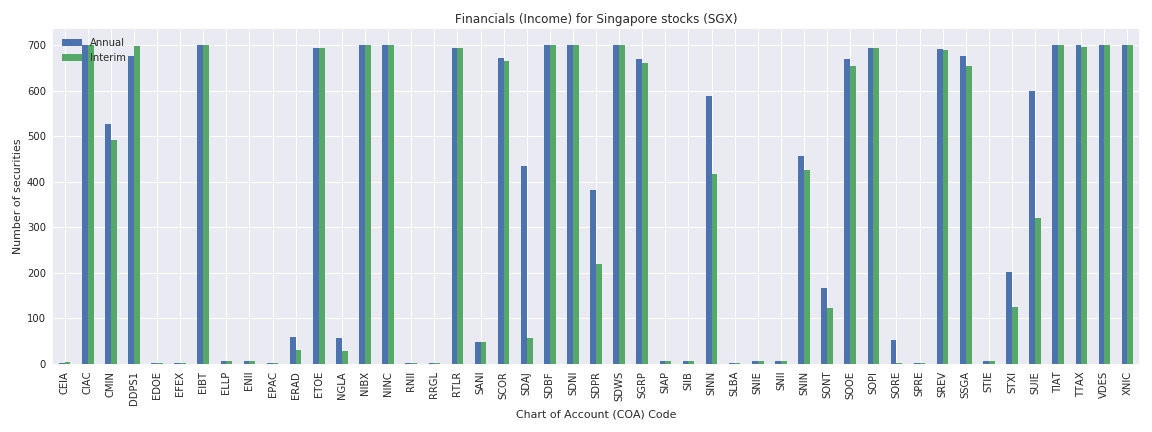
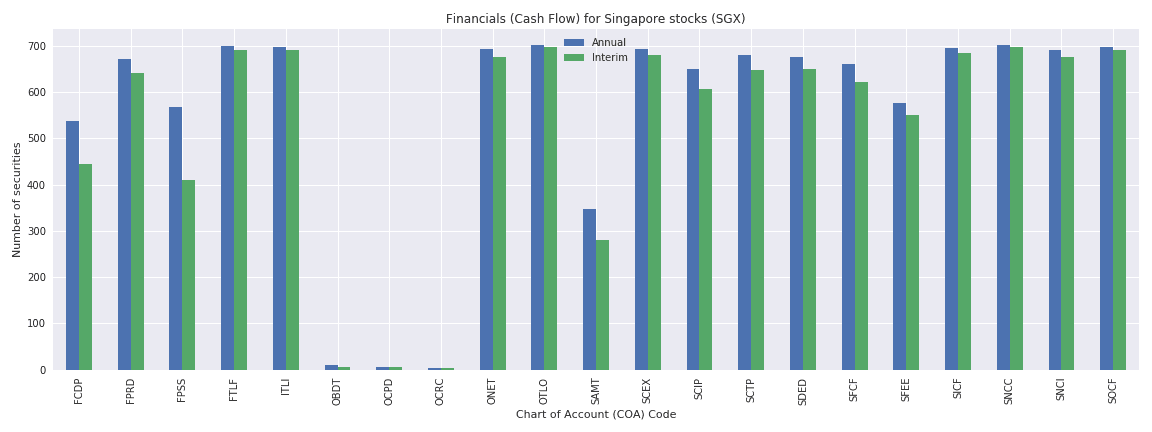
Spain

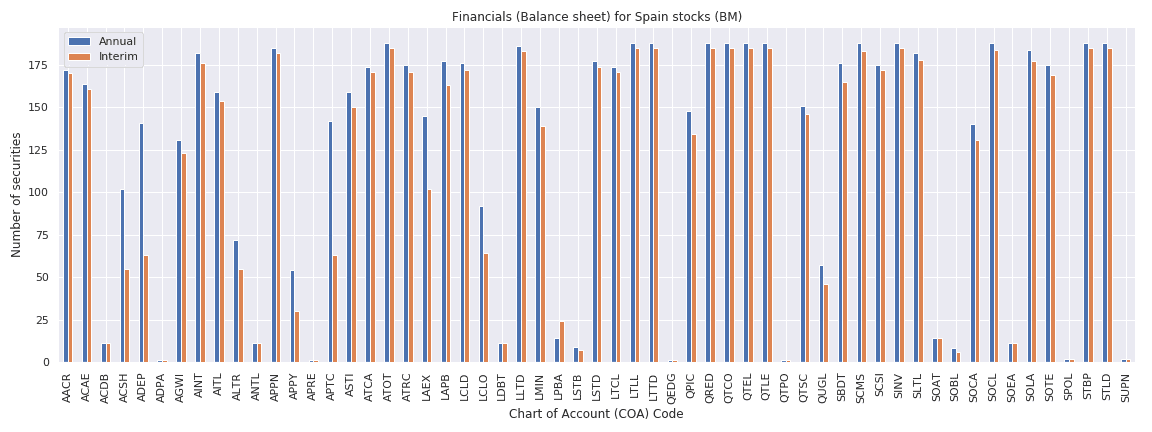
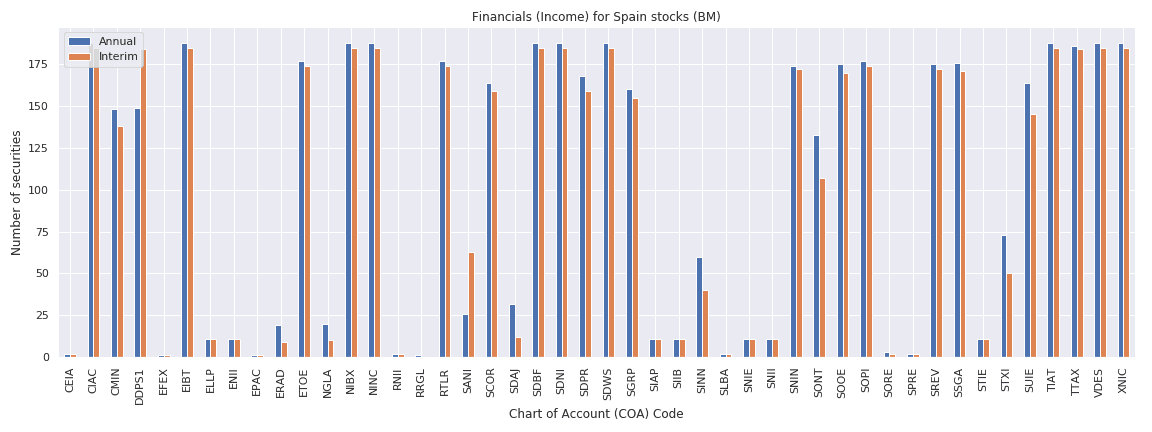
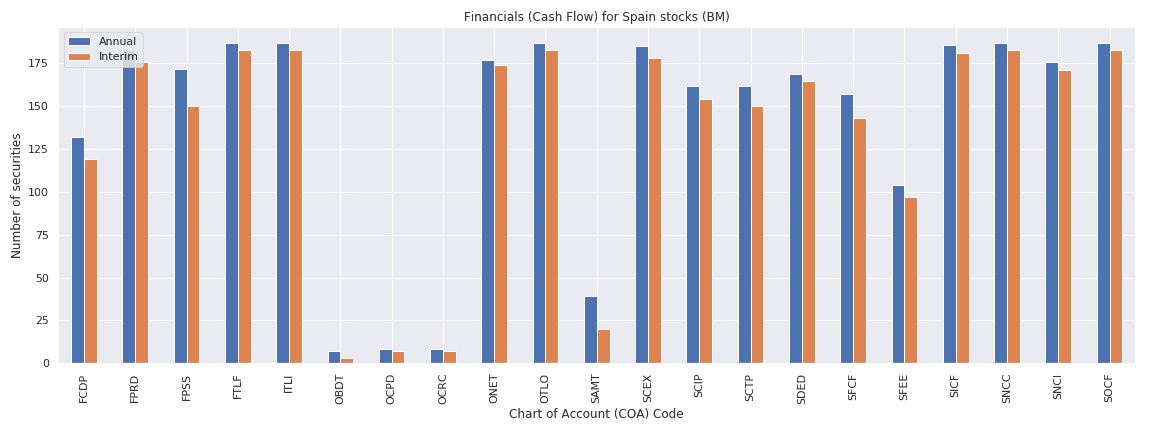
Sweden
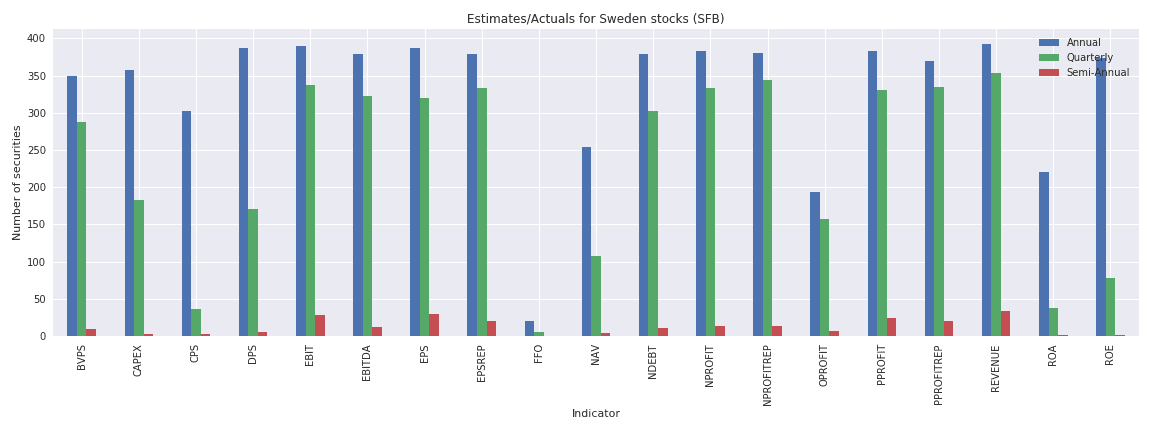
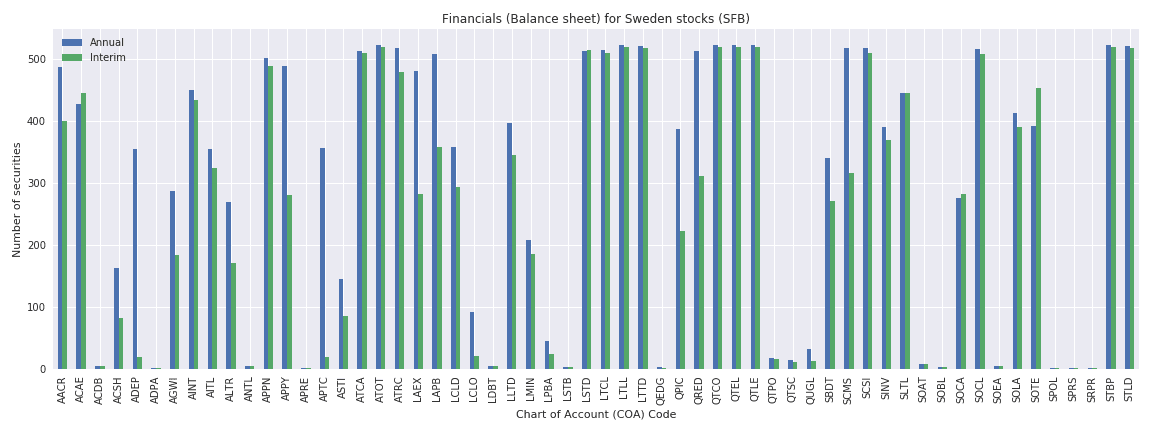


Switzerland
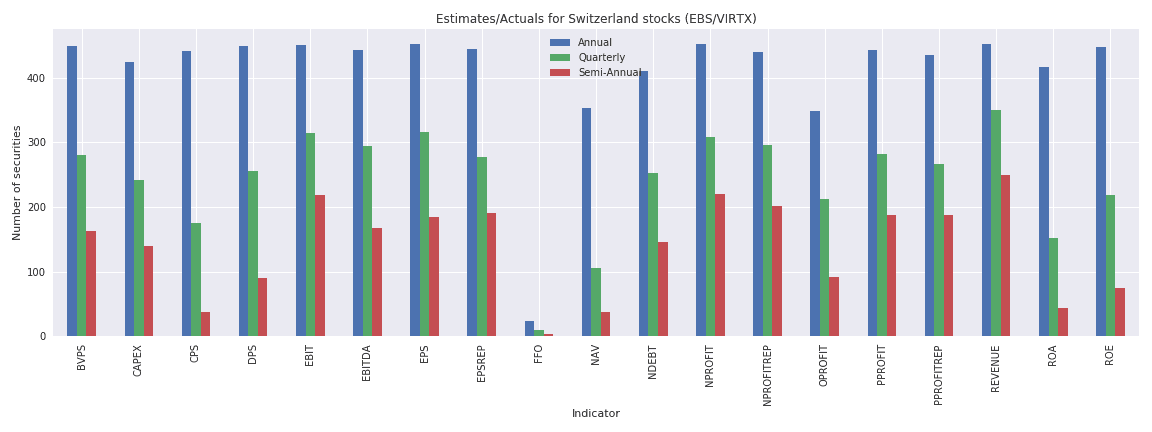


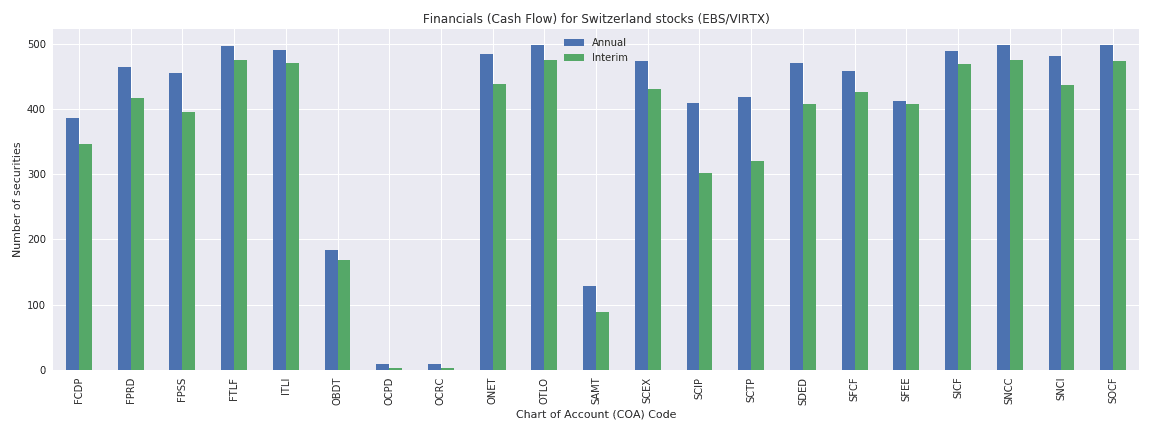
United Kingdom

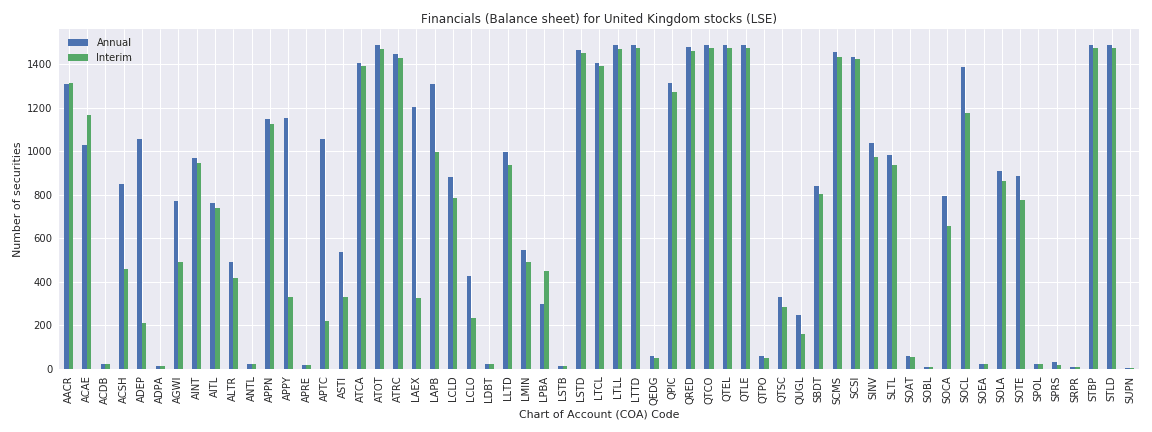
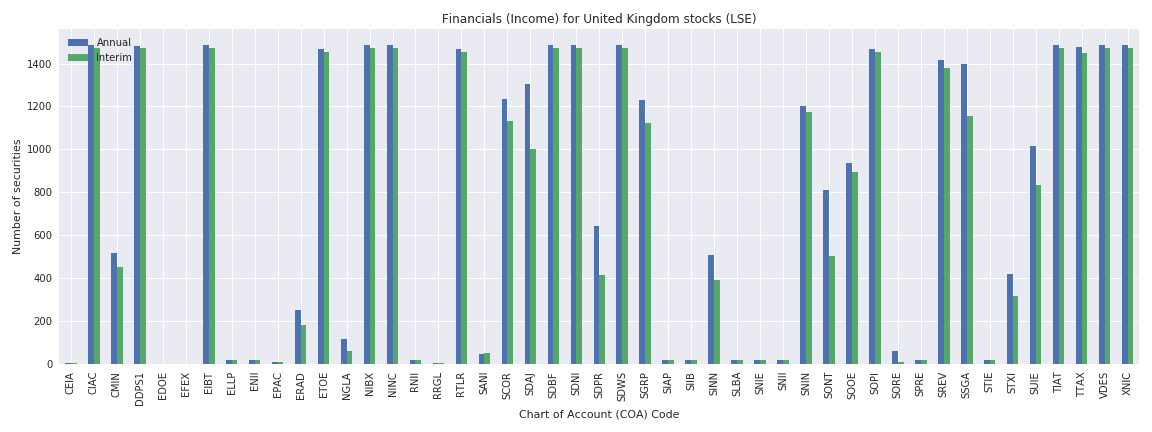
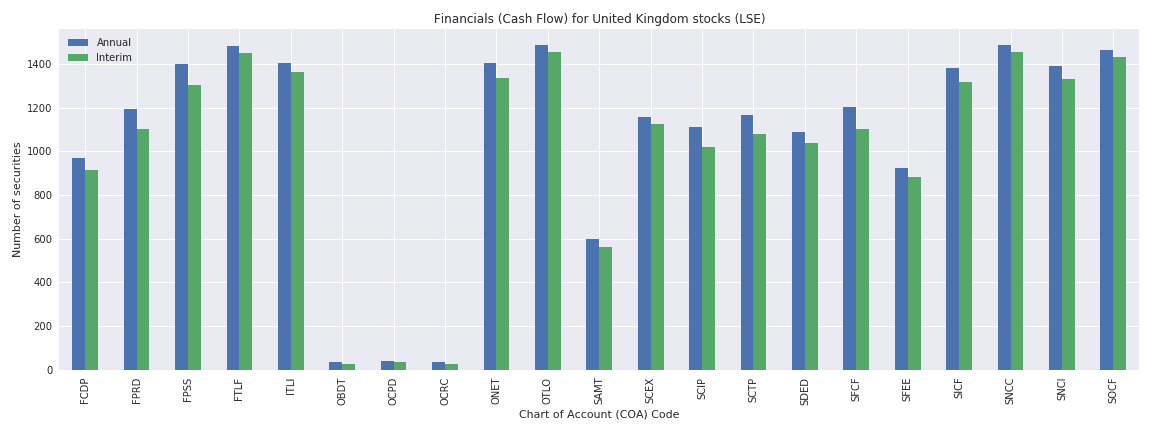
United States
Listed stocks (NYSE/NASDAQ/AMEX)
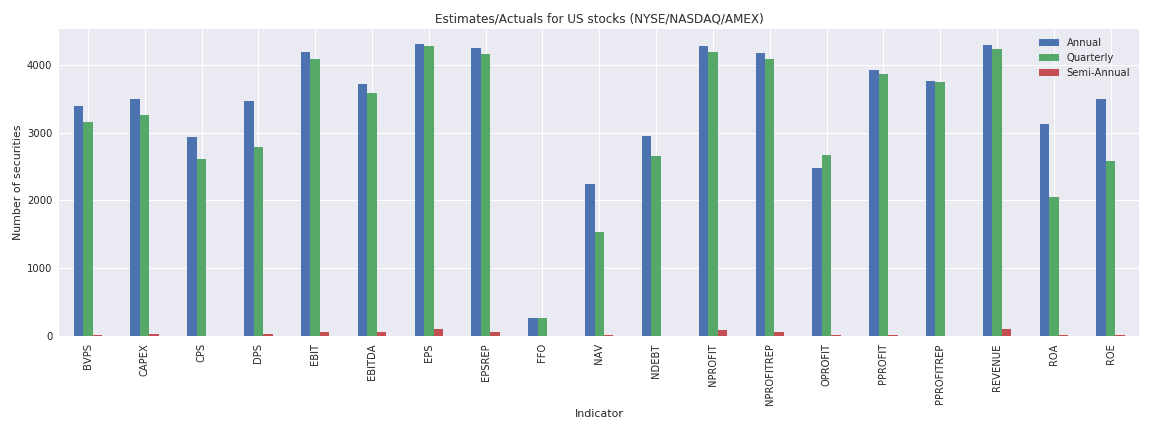
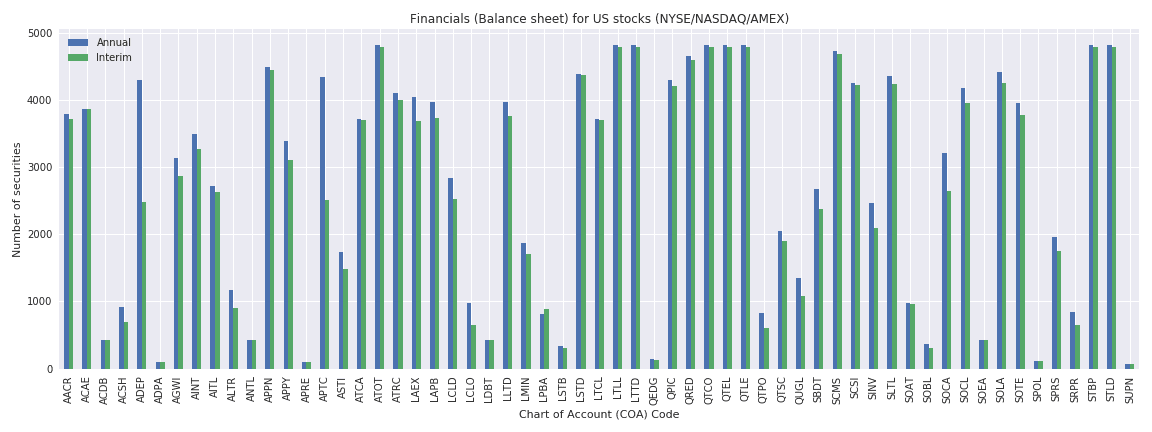
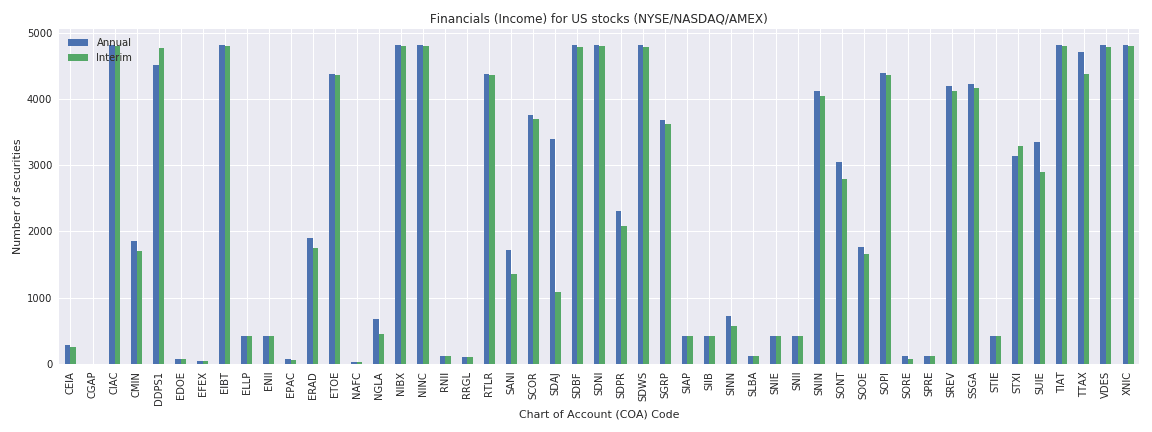
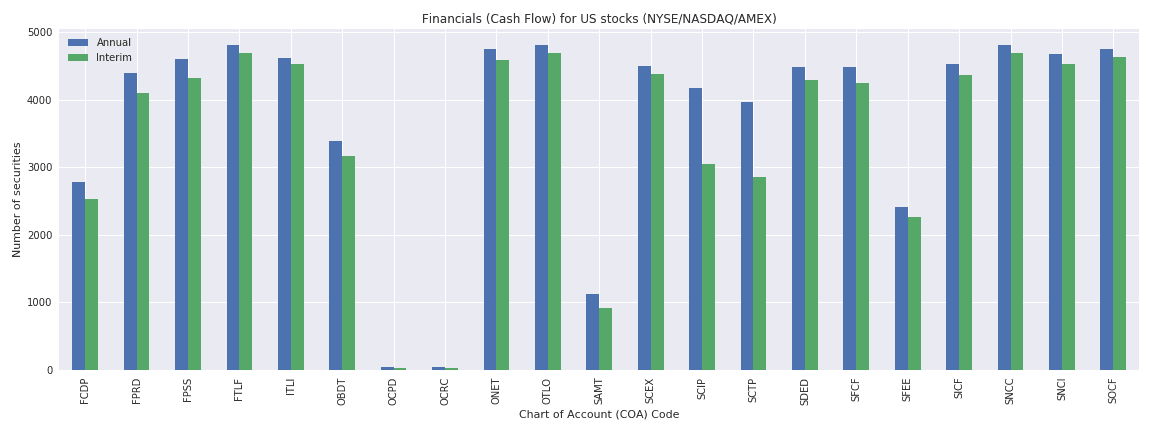
OTC stocks (PINK)
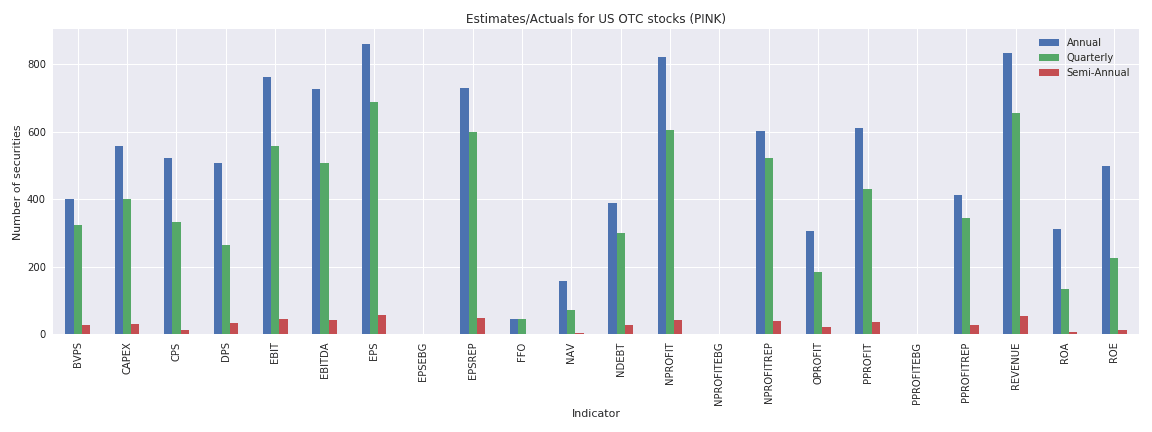
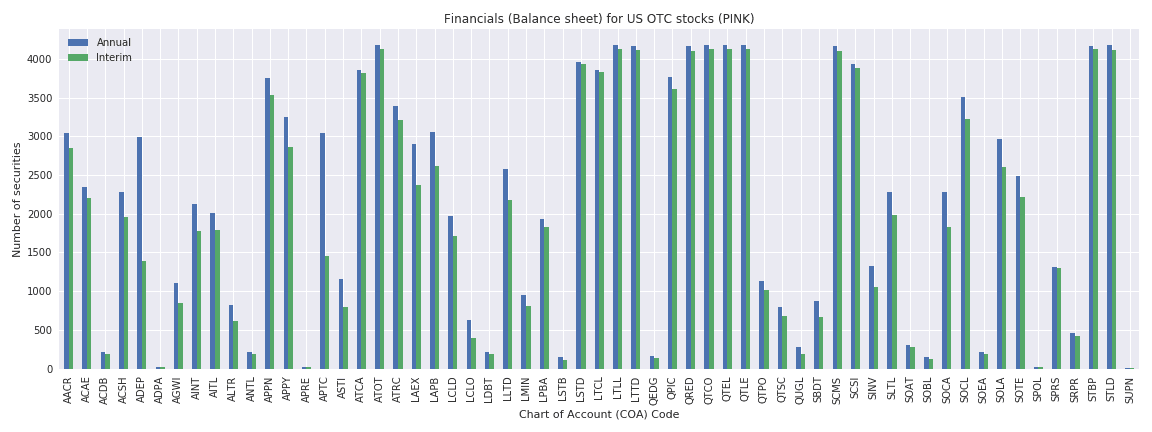

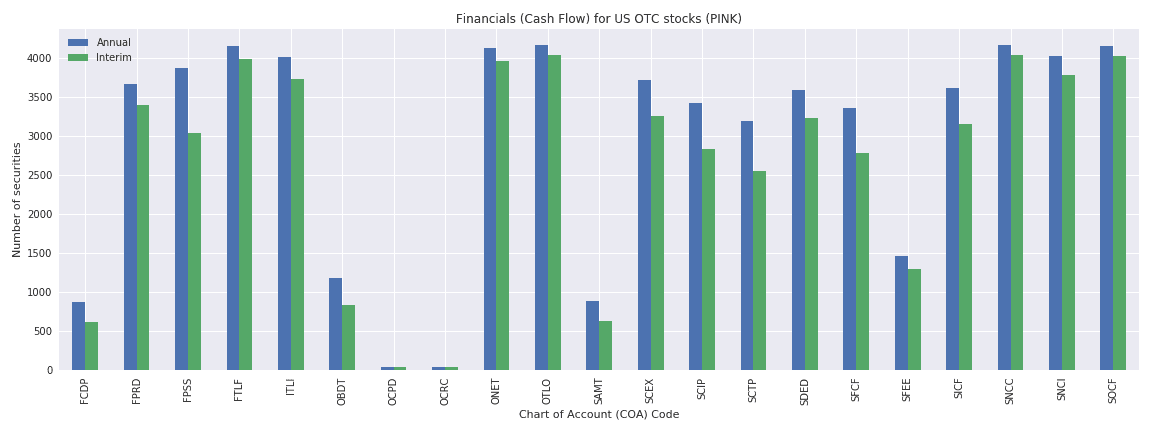
More information
Neither Interactive Brokers nor Reuters provides readily available documentation about the Reuters Worldwide Fundamentals datasets. To learn more about the available financial statement metrics and how they are calculated, search Google for "Reuters Fundamentals Glossary" to try to locate a copy of Reuters PDF glossary which contains hundreds of pages of information about the dataset.
To learn more about the metrics in the estimates and actuals dataset, search Google for "Refinitiv I/B/E/S Quantitative File System QFS" .
The Reuters data available via the IBKR API is also available in Trader Workstation (TWS). It may be helpful to look up fundamentals for one or two companies in TWS to help orient to the API data.
To get started working with fundamental data in QuantRocket, see the usage guide.